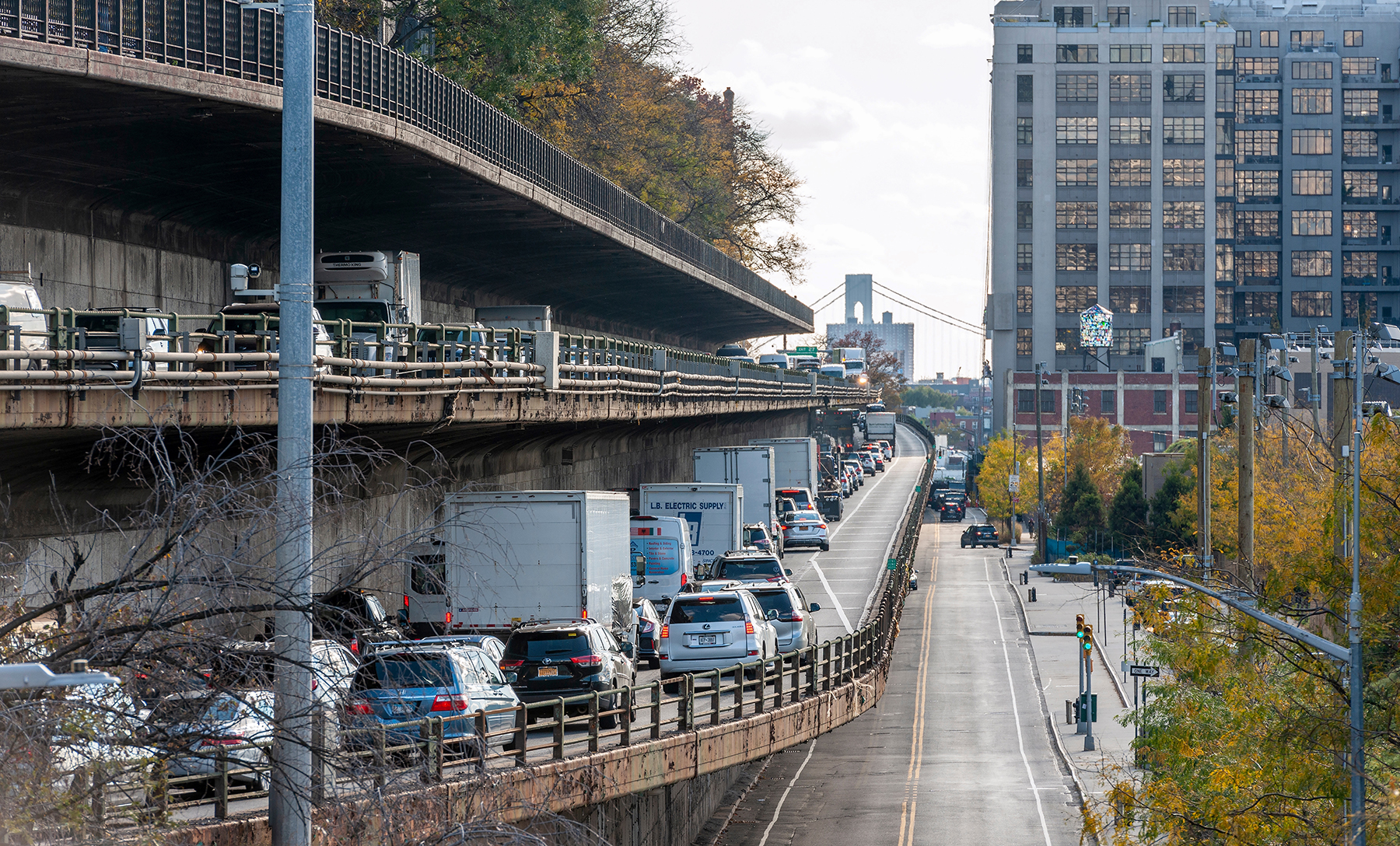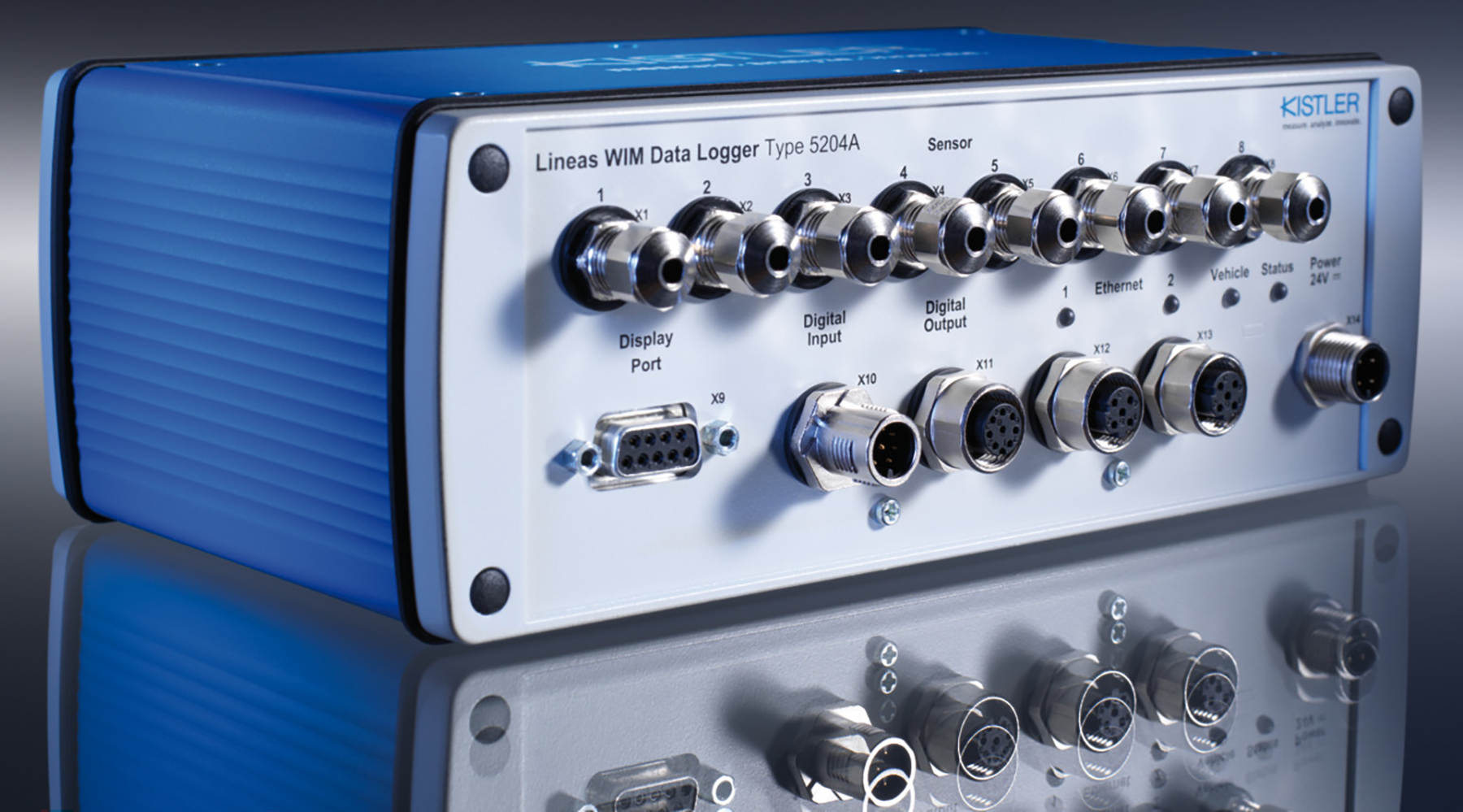
By J.T. Kirkpatrick
New York City is known for its unique structures – a reputation that extends to Interstate 278, also known for a stretch as the Brooklyn-Queens Expressway. Built more than 70 years ago with a triple-cantilevered design, the BQE was constructed to provide an express bypass over the area that connects Brooklyn with major access points to Manhattan, Queens, and Staten Island.
As the only part of the nation’s interstate highway system in Brooklyn, the BQE is a vital artery in the region’s transportation system and a route for commercial vehicle traffic. Its vertically staggered, horizontally cantilevered express lanes are designed to alleviate local traffic congestion. Suspended above Furman Street, the 0.4-mile-long triple-cantilevered segment supports three westbound traffic lanes on the lowest elevated level, three eastbound lanes on the middle level, and a pedestrian promenade on the upper level.
Further reading:
- New York’s Brooklyn Bridge is an engineering marvel
- How the interstate highway system connected – and in some cases segregated – America
- Mileage-based user fees show promise for trucks, report says
More than 153,000 vehicles are estimated to use the BQE daily, with a number of those vehicles being overweight trucks that go undetected by law enforcement and cause wear and tear and higher maintenance costs on this aging but important piece of infrastructure.
In 2019, as a first step in a plan to preserve the BQE structure, the New York City Department of Transportation decided to assess the number of overweight trucks that crossed the BQE daily. Quantifying overweight truck traffic frequency was considered crucial to creating a direct enforcement solution to issue citations to significantly reduce or eliminate overweight trucks on the BQE.
To investigate the problem of overweight trucks, the NYCDOT contacted its traffic engineering partner, the Connected Communities for Smart Mobility toward Accessible and Resilient Transportation Center. The C2SMART Center is an academic consortium led by New York University that includes a tier 1 university transportation center funded by the 2021 Infrastructure Investment and Jobs Act. In turn, C2SMART turned to Kistler Group to provide the sensors needed to study the issue. Based in Switzerland, with U.S. offices in New York and Michigan, Kistler is a global leader in dynamic measurement technology.

The weigh-in-motion system
To record the details about overweight trucks, a Kistler weigh-in-motion system was installed first in the BQE’s eastbound traffic lanes, leading to Queens. This system combined in-road sensors with quartz sensing elements that were linked to a series of data loggers. The resulting test bed was expected to provide the foundational data – explicitly, how many trucks crossed the BQE daily and their overweight statuses – to address the problem legislatively and in terms of enforcement.
The in-road sensors were specifically designed to measure wheel and axle loads of on-road vehicles. The sensors are held in place by an adhesive that is poured and grounded level with the road surface so there is no disruption to the level or smoothness of the pavement. Designed for long-term durability, the sensors can withstand severe temperature fluctuations and harsh outdoor weather conditions.
The data loggers interface with the sensors to provide real-time traffic monitoring data. With enhanced processing and signal conditioning, the data loggers deliver consistent weighing accuracy from low to high driving speeds for up to four lanes of traffic. In addition, Kistler’s open-source software enables the data loggers to seamlessly interface with other technology solutions. For the BQE weigh-in-motion system, C2SMART integrated automatic license plate recognition cameras to identify each truck’s owner/operator and vehicle class to assess whether the truck was operating within legal weight limits. With the open-source software, the cameras were an easy addition to the system.
“We used three cameras to simultaneously capture and record identification information for overweight trucks, (including) one positioned for the license plate (and one for a) side view of the vehicle and U.S. DOT number, which legally is required to create notice of liability,” says Hani Nassif, Ph.D., P.E., M.ASCE, a professor of civil and environmental engineering at Rutgers University and an associate director of the C2SMART Center. Rutgers is a member of the center’s academic consortium. “By integrating the feeds from three cameras with truck weight information, the (weigh-in-motion) system is able to provide the legal identification needed to issue direct enforcement citations,” Nassif explains.
Piloting the process
During the pilot phase, the weigh-in-motion data showed that roughly 25,000 trucks cross the BQE daily, with 15% over the legal weight limit for their class. This crucial information provided a foundation for New York’s state legislature to adopt the BQE Overweight Truck Bill in 2021, which enabled an automated enforcement system for overweight trucks to be installed on the BQE.
“NYCDOT is developing a plan to address the BQE structure because of its age,” notes Tanvi Pandya, P.E., the executive director of the NYCDOT’s BQE, Design Build & Emergency Contracts. “Due to the complexity of the project, this effort could take some time. In the meantime, to extend the service life of the existing structure, we focused on reducing the damage from overweight trucks on the BQE. And, with Kistler and C2SMART, we’re leveraging technology to do that.”
Before the weigh-in-motion system’s data on overweight commercial vehicles operating on the BQE could be used for direct law enforcement, however, it first needed to be certified using procedures established by the New York State Department of Agriculture inspectors. In New York, the agriculture inspectors are part of a certification process that includes procedures listed in the National Institute of Standards and Technology’s Handbook 44, which are updated with consensus within the National Conference on Weights and Measures to prove the accuracy of a system.
However, NCWM had never certified a weigh-in-motion system for the purpose of law enforcement; its work had been achieved solely with static scales, not with measurements produced by sensor technology. To resolve this challenge, Kistler worked with NCWM to prove the accuracy of the measurements.
Testing the system
Kistler installed the full weigh-in-motion system in one week and returned to the site a few weeks later to optimize it. Using three different truck classes, with two different load cases of either full or empty, and at three different speeds, the data was collected over a span of three days.
“Using the data from all of these runs, we calibrated and optimized the system for speeds and vehicles to be targeted,” says Alex Schumacher, Kistler’s project manager/applications specialist, traffic solutions. “With an optimization algorithmic tool that we created, we improved the system accuracy to the point where it couldn’t fail, no matter how many truck runs we did.”

The optimization of the weigh-in-motion system, as well as confirmation that 100% of weights were within the specified requirements, enabled real-world testing and verification for the next several months.
With nearly nine months of weigh-in-motion system operation, the system was ready for the enforcement certification process. This effort began following a 90-day warning period that started on Aug. 10, 2023. NYCDOT then used the weigh-in-motion system’s data and photo documentation to send drivers of overweight trucks a warning letter in the mail informing them of their overweight infraction and that, as of Nov. 8, direct law enforcement would begin. Meaning, from that day forward, they would incur a $650 fine for an overweight violation. It was the launch of the only automated citation system for overweight vehicles in the United States.
The benefits of the system were quickly clear. “One month after the weigh-in-motion system went live, the number of overweight vehicles going over the BQE daily (was) cut in half,” Nassif says.
In 2024, NYCDOT plans to implement the same weigh-in-motion solution for direct enforcement on the BQE’s westbound lanes that lead to Staten Island. Based on the BQE experience, other U.S. states can consider similar laws to protect aging infrastructure by using automated direct enforcement to ticket overweight trucks.
J.T. Kirkpatrick is Kistler’s head of traffic solutions for North America.
This article is published by Civil Engineering Online.



